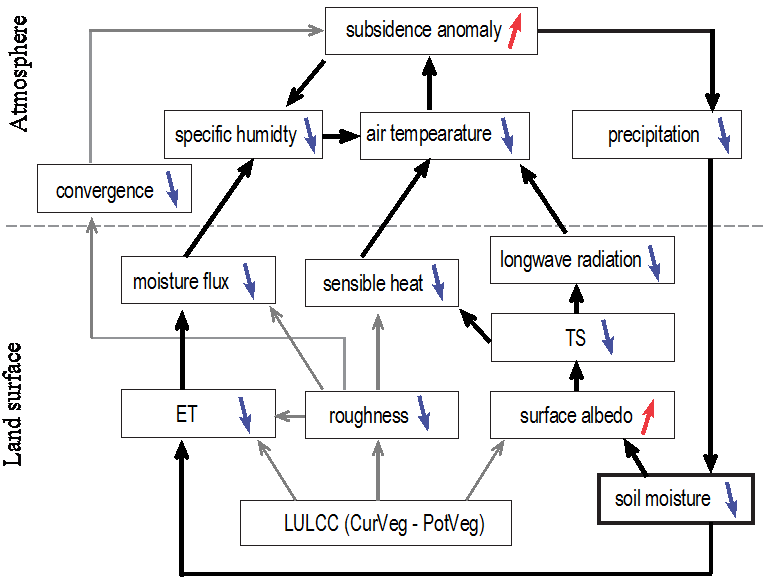How Does Land Use and Land Cover Change Affect Monsoon Asian Climate and Its Variability?
Date:2015-04-09
Human activities have significantly altered land use and land cover over past centuries. Many previous studies suggested that Land use and land cover change (LULCC) can lead to significant changes in land-atmosphere fluxes, which in turn affect regional climate mean state.
Still, there are questions remained unanswered. For example, is the impact of LULCC on regional climate season-dependent? Does LULCC impact climate variability? How to understand the impact of LULCC on monsoon Asian climate and its variability? To answer these questions, an in-depth study was performed by Drs. XU Zhongfeng Xu, and FU Congbin from RCE-TEA at the institute of Atmospheric Physics, together with Dr. R. MAHMOOD from Western Kentucky University and Zong-Liang YANG and Hua SU from the University of Texas at Austin, USA.
Two numerical experiments were performed with potential and current vegetation cover using the fully coupled Community Earth System Model. The comparison of two experiments suggests that the most significant impact of LULCC on monsoon circulation occurs in spring and autumn, but weak impact occurs in winter and summer monsoon seasons. LULCC leads to two positive feedbacks loops (Fig.1). One occurs between land and atmosphere, involving soil moisture, surface albedo, evapotranspiration, atmospheric circulation, and precipitation. The other one occurs in atmosphere involving air temperature, vertical motion, and atmospheric moisture.
In spring and autumn, the background circulation is week. Two positive feedbacks can be maintained, which in turn amplify the impact of LULCC on regional climate. In contrast, two positive feedbacks can barely be maintained under strong winter and summer monsoon circulation. As a result, the response of regional climate to LULCC is weak in summer and winter monsoon seasons.
In addition, this study also suggested that LULCC can also lead to detectable changes in 2m air temperature (T2m) over India and over the north China–east Mongolia (NCEM) region. The changes in the T2m variability are caused by different mechanisms in different regions. In autumn and winter, the changes in T2m variability in the NCEM region likely results from the changes in the atmospheric variability. However, the T2m variability in India is likely linked to the changes in the land-atmosphere coupling strength.

Fig.1 Schematic chart of the influence of LULCC on land surface fluxes and atmospheric circulation in Asia. The positive feedback loops are shown using thicker and darker arrows.
Reference
Xu, Z., R. Mahmood, Z.-L. Yang, C. Fu, and H. Su (2015), Investigating diurnal and seasonal climatic response to land use and land cover change over monsoon Asia with the Community Earth System Model, J. Geophys. Res. Atmos., 120, 1137–1152, doi:10.1002/2014JD022479
http://onlinelibrary.wiley.com/doi/10.1002/2014JD022479/full
Contact: Dr. XU Zhongfeng, xuzhf@tea.ac.cn
